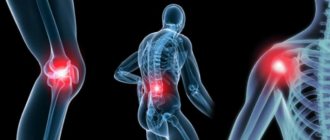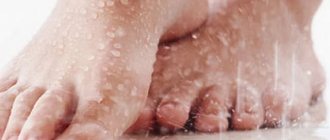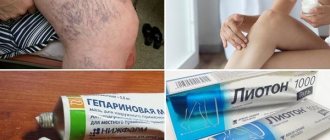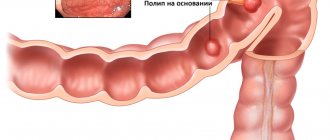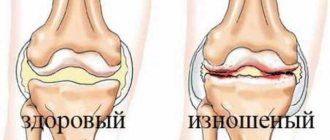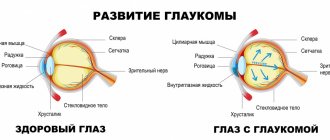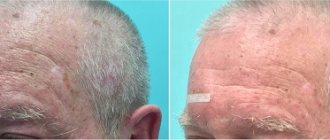Types of hyperhidrosis
Hyperhidrosis is divided into primary and secondary, generalized and local.
- Generalized (generalized) hyperhidrosis. Manifested by increased sweating of the entire surface of the body.
- Local hyperhidrosis. It can appear on any part of the body, but most often in the armpits, palms and soles, face i Batyrshina S.V. Hyperhidrosis: method of correction / S.V. Batyrshina, L.A. Khaertdinova // Practical medicine. -2014. — No. 8 (84). — P. 16-23. .
- Primary (essential) hyperhidrosis. Appears for unknown reasons or spontaneously. In patients with primary hyperhidrosis, both an increase in the number of sweat glands and an increase in their reactivity to ordinary stimuli were noted. Typically, this variant of hyperhidrosis manifests itself from childhood, sharply intensifying during puberty. About 40% of patients note the presence of hyperhidrosis in one of the parents i Batyrshina S.V. Hyperhidrosis: method of correction / S.V. Batyrshina, L.A. Khaertdinova // Practical medicine. -2014. — No. 8 (84). — P. 16-23. .
- Secondary hyperhidrosis. Develops in various diseases and conditions (pathological and normal). Usually of a generalized nature.
When to see a doctor
If a person begins to sweat during exercise, hot weather, or extreme excitement, there is no reason to worry. Health problems are indicated by sweating, which occurs against a background of complete calm or is accompanied by additional symptoms.
A slightly elevated body temperature, which is accompanied by night or evening sweats, may be a sign of a chronic infection. Sometimes this is how pulmonary tuberculosis, immune disorders, and the initial stages of cancer manifest themselves.
A dangerous symptom is the appearance of weakness, dizziness, loss of consciousness against the background of increased sweating. This may be a sign of low glucose levels - hypoglycemia. The condition is life-threatening and therefore requires emergency medical attention. Hyperhidrosis is cured only after glucose levels are normalized.
Older women who experience menstrual irregularities and the first symptoms of approaching menopause require special treatment. Without special means, the condition may gradually worsen, and menopause will be difficult.
Increased sweating is one of the signs of thyrotoxicosis. This disease is accompanied by an increase in thyroid function and the release of increased doses of hormones into the blood. At the same time, the heartbeat increases, heart rhythm disturbances appear, and the person quickly loses body weight, despite maintaining the nature of the diet.
Symptoms and consequences
The disease has symptoms of varying severity. There are several levels of severity. At level 1, sweating does not interfere with human activity; it is invisible. At level 2, hyperhidrosis may interfere with daily life, but the disease is tolerable. At level 3, the problem causes significant inconvenience. At level 4, excessive sweating interferes with a person's ability to carry out daily activities.
In severe cases, the following symptoms are observed:
- swelling;
- pain;
- redness;
- constant cooling of the body due to evaporation of fluid;
- psychosomatics – problems in society, anxiety, rapid heartbeat.
Symptoms are aggravated by stressful situations, strong emotionality, warm seasons, body heat, as well as the consumption of chocolate products, coffee and certain spices.
Many people experience seasonal increased sweating in the spring and summer. Constant manifestations are rare - sweating occurs regardless of the weather and is not associated with activity or stress. Relapses may occur when, after hyperhidrosis, the work of the sweat glands returns to normal, and then increased sweating returns. This is usually due to hormone surges and disruptions in the functioning of the autonomic nervous system.
In most cases, the cause of the disease is not known; the pathology can be caused by high activity of the reflexes responsible for sweating. Hyperhidrosis of the armpits and palms is typical for people under 25 years of age and appears for no reason. Genetics matters; in more than 40% of cases there is a history of the disease.
Normal sweating
Hyperhidrosis is not a disease, but rather an individual characteristic of the body, which causes a lot of trouble in everyday life. Normally, increased sweating is a common reaction to the following factors:
- temperature increase;
- physical exercise;
- stress;
- hot and spicy food;
- hormonal changes associated with menopause, pregnancy, puberty.
In addition, it can be a side effect when taking certain medications.
With little physical activity, a person produces about 0.5 liters of sweat per day, but as temperature and load increase, this volume can increase to 10 liters. Sweat glands respond to signals sent by the brain in two ways:
- increase or decrease the amount of sweat;
- open for active release of moisture, or close.
How to properly treat hyperhidrosis?
How to deal with the problem and how to cure it forever - this worries people who are faced with the disease. Can hyperhidrosis be cured? It is possible, but it will take a lot of effort.
It is important to consider the reasons for successfully getting rid of the problem. Sometimes hyperhidrosis is inherited. Currently, various methods are used to treat sweating and the unpleasant odor that accompanies it.
The first recommendation is to regularly wash problem areas. In case of excessive sweating of the feet, in most cases, washing them with cool water twice a day is sufficient. How to get rid of excessive sweating under the arms, chest and back? Shower more often. This is especially true in hot weather.
If hygiene methods are not effective, you need to use special antiperspirants. If special means do not help, you need to know which doctor to see. It is necessary to find out the reasons and get tested.
If sweating was normal before, and then excessive sweating develops, hyperhidrosis may be suspected. If the causes of the problem cannot be determined, you can resort to iontophoresis, surgery, or inject Botox.
What causes the development of foot hyperhidrosis?
This pathology causes a lot of inconvenience in a person, which affects the psycho-emotional state. Hyperhidrosis of the feet indicates the appearance of a large amount of sweat, as well as an unpleasant odor. As a result, a person becomes ashamed to take off his shoes when visiting. When moving, the disease also causes some discomfort. If foot hyperhidrosis is not treated and clinical recommendations are not followed, all this will provoke strong feelings that will ultimately result in low self-esteem and isolation.
Recommended articles on the topic:
- How to massage the abdomen for weight loss: different techniques for health and beauty
- Stone massage: description, benefits, methods
- MRI of three parts of the spine: when is it necessary and what are the features of the procedure
Some people are too embarrassed about their problem and do not seek help from a doctor. Such patients often look for solutions in traditional medicine, where there are many recommendations and recipes in this regard. However, without an accurate diagnosis and identification of the underlying cause, treatment of foot hyperhidrosis is impossible. Therefore, if characteristic symptoms appear, it is necessary to consult a specialist and undergo an examination.
The main causes of foot hyperhidrosis include:
- incorrectly selected shoes;
- failure to comply with personal hygiene rules;
- wearing shoes that do not fit (tight), as well as those made from low-quality artificial materials;
- the presence of benign or malignant tumors in the body;
- disruption of the central nervous system;
- hormonal imbalances;
- overweight and obesity;
- diabetes;
- pathologies of the thyroid gland;
- problems with the cardiovascular system;
- hypertension;
- bad heredity;
- VSD (vegetative-vascular dystonia).
At the doctor
Many people ask which doctor treats hyperhidrosis. First you need to see a therapist, you may also need to consult the following specialists:
- dermatologist - to exclude dermatosis and inflammation of the sweat glands;
- neurologist - to check for autonomic disorders;
- endocrinologist - to assess the functioning of the thyroid gland, check hormone levels and exclude diabetes;
- cardiologist - to check for the absence of angina pectoris;
- orthopedist – often sweating feet is associated with flat feet.
Only a qualified specialist can determine the diseases that cause excessive sweating. The attending physician prescribes various studies.
Heavy sweating can be a sign of a number of other pathologies, which only a doctor can determine. If no diseases are detected, then they fight the problem using standard methods.
Hyperhidrosis test
The extent of hyperhidrosis and its boundaries are determined using the Minor test. You need to apply a 2% iodide solution to the armpit area. Next, let the liquid dry and sprinkle the skin with starch. In the presence of excessive sweating, the skin becomes purple, sometimes black. The area of manifestation is circled and marks are made to evenly distribute the antiperspirant over the skin.
Sweaty armpits in women
In the female body, the release of large amounts of sweat depends on hormonal levels. When it changes, the interaction of various parts of the autonomic nervous system changes. This process is most pronounced during menopause.
With a decrease in ovarian function in women, their stimulation by pituitary hormones - follicle-stimulating and luteinizing hormones - increases. But due to physiological characteristics, the release of thyroid-stimulating hormone, which increases blood flow in the thyroid gland, simultaneously increases. Most often this process starts in the evening or at night. It manifests itself in the form of hot flashes - the appearance of a feeling of heat in the upper body and head. The woman begins to sweat heavily. The duration of such an attack is several minutes.
You are more likely to experience heavy sweating if you are overweight. Thermoregulation disorders appear with arterial hypertension. These diseases also often progress after age 50. Hyperhidrosis in this case is secondary. It is not life-threatening, but causes discomfort.
Use of products: antiperspirants and deodorants
Antiperspirants are not medicines, but products that prevent increased sweating after treatment. For hyperhidrosis, it is better to use products that are sold in pharmacies, or resort to traditional medicine recipes. It is recommended to combine products, adhering to the rules of use.
Deodorants for hyperhidrosis are applied before bedtime so that the effect begins in the morning. This is the optimal time for application, since the glandular ducts do not function at night. The application area must be dried, you can use a hairdryer.
The composition often includes aluminum chloride hexahydrate. Such antiperspirants are medicinal and are used in the evening, before bed, once every five days. With continued use, you can achieve normalization of sweating and switch to your usual products.
What traditional medicine offers:
- alum – minerals with antibacterial effects;
- Jojoba oils, as well as tea tree and coconut oils, are effective against sweating;
- kaolin powder.
To get rid of the accompanying unpleasant odor, use baking soda.
Botulinum toxin for hyperhidrosis
Botox is a widely known means of preserving youth. Another way to use it is to reduce excessive sweating.
Botulinum toxin injections are used to treat local hyperhidrosis by injecting the substance into the problem area. The action of the drug blocks impulses and eliminates the effect of hyperhidrosis. In most cases, the effect of the procedure lasts 6-8 or more months i Rakhmatullina E.F. Botulinum toxin type A in the treatment of autonomic disorders / E.F. Rakhmatullina // Practical medicine. — 2013. — No. 1 (66). — P. 50-54. .
Features of the effects and benefits of Botox injections
Medications for the treatment of excessive sweating of the armpits include botulinum toxin type A, which is a strong poison of organic origin. In small doses it is safe for the body - it is used to block nerve and muscle impulses.
When Botox is injected under the skin, impulses from sweating fibers are not transmitted to the glands - hyperhidrosis stops. At the same time, heat and water exchange of the skin is not disturbed.
Treatment with this method is effective in the second and third stages of the disease, when severe sweating is observed due to nervous tension, discomfort in communication, or a person has constant sweating and wet clothes under the arms. During the first stage, it is recommended to use aluminum chloride antiperspirants that block the sweat glands for a period of 3 to 4 days.
Among the advantages:
- long-lasting effect, lasting up to 10-12 months;
- safety of injections provided the correct injection technique is used;
- short recovery period.
Contraindications
Absolute contraindications for the use of botulinum toxin are neuromuscular disorders, pregnancy, lactation, local inflammatory process, hypersensitivity to the components of the drug. Relative contraindications are a history of neurological diseases, use of anticoagulants and antiplatelet agents, chronic diseases in the acute stage, hemophilia.
Treatment technique with botulinum toxin
The procedure does not require special preparation and is carried out after a preliminary iodine-starch test. The area of the blue spot and its intensity are assessed. To eliminate pain, a local anesthetic is applied to the skin. The composition is administered intradermally at intervals of 1.5-2 cm to a depth of 2 to 3 mm. Together with Minor's test, the procedure takes from 40 to 60 minutes.
Post-procedure care
After the session, slight swelling, redness and nodules are observed in the armpit area, which disappear after 3-4 days. Botulinum toxin begins to act on the 4th day, the final result will be visible after 2 weeks and lasts for 10-12 months, it depends on the characteristics of the body. Then the treatment must be repeated. Each time the amount of the drug decreases, and the duration of exposure increases.
Recommendations for care after the procedure:
- for three days, massage, which reduces the effectiveness of the product, and the use of antiperspirants are contraindicated;
- For seven days it is not recommended to visit the bathhouse, swimming pool, actively engage in sports or drink alcohol.
Which drug is better?
For injection treatment of sweating, drugs containing botulinum toxin type A are used, which blocks nerve impulses traveling to the sweat glands. The difference lies in the result obtained, the price, the consumption of the product and the duration of the effect. We invite you to familiarize yourself with the characteristics of the drugs.
| Name | Efficiency, % | Duration of effect, months | Approximate consumption, units. | Approximate cost, US dollars | |
| for a unit | per session | ||||
| "Botox" | from 90 to 100 | from 8 to 10 | from 80 to 100 | 3,75 | from 300 to 375 |
| "Dysport" | from 80 to 100 | from 8 to 10 | from 200 to 300 | 1,5 | from 300 to 450 |
| "Xeomin" | from 80 to 90 | from 6 to 8 | about 80 | 2,5 | 200 |
| "Lantox" | about 80 | about 6 | about 100 | 2,5 | 250 |
Injecting botulinum toxin type A under the skin is a safe, simple and effective treatment for excessive sweating.
Home Remedies for Hyperhidrosis
If intense sweating has become a real problem for you, do not rush to spend money on expensive cosmetic procedures in salons. First, try popular traditional medicine recipes. Home remedies have many advantages:
- Consist of safe natural ingredients.
- They are very inexpensive.
- Easy to prepare and use.
The only drawback of traditional methods is the need for long courses.
We suggest you familiarize yourself with several effective home recipes that can help reduce sweat production. They are simple, affordable and give good results.
- Compresses with sage
Sage contains a whole complex of active components and is one of the most popular plants in folk medicine. It has a pronounced bactericidal and anti-inflammatory effect. An infusion of this herb improves stress and depression and helps cope with fatigue. In the form of compresses, sage infusion has proven itself well against night sweats, so it is often recommended for neurotics and patients with tuberculosis. The gauze is folded several times, soaked in infusion and wiped over the armpit area. Perform the procedure at least twice a day.
- Oak bark
Its decoction is traditionally used to heal wounds and burns, as well as to relieve inflammation. Thanks to its high concentration of tannins, the bark helps reduce excessive activity of the sweat glands. To wipe the armpits, the composition is prepared in this way: pour a couple of tablespoons of the bark with a cup of boiling water and keep it in a water bath for 30 minutes. The result is a healing decoction that should be used at least twice a day. In addition, it is useful to take baths with this decoction. This will require a little more bark - 3 or 4 tablespoons.
- Burnt alum
This natural remedy can be bought at any pharmacy. Its solution has a bactericidal effect and therefore can be used instead of deodorant. It neutralizes odor well, but does not stop sweating. Therefore, if you have severe sweating, it is better to try another remedy.
- Chamomile bath
This procedure is one of the most pleasant; it not only eliminates sweating, but also helps to relax. First you need to prepare an infusion. To do this, pour 3 tablespoons of dried flowers into a liter of boiling water and wait about 20 minutes. The finished composition is poured into a warm bath.
- "Sponge with vegetables"
Parsley, lettuce and spinach are finely chopped or grated. Then they are mixed, wrapped in gauze, and a “sponge” is obtained, which must be carefully “smeared” on the skin under the arms.
- Homemade tonic
A good rub can be obtained from the following ingredients: glycerin (2 teaspoons), vodka (2 cups), castor oil (7 teaspoons), dried mint (2 tablespoons). Mix all ingredients and leave for 7 days. After infusion and straining, the product is ready for use. It not only reduces sweating, but also has a pleasant cooling effect.
- Malt vinegar
Treat the skin of sweating armpits with its solution. It is better to do this before going to bed, and take a shower immediately in the morning.
What else can you do to help yourself?
You can reduce sweating in the axillary area by adjusting your diet. Try to eat as little as possible of foods that increase the activity of the sweat glands. These include:
- Fish.
- Onion.
- Garlic.
- Hot spices.
- Coffee Tea.
- Alcohol.
Do not forget that you need to drink enough clean water every day. Many people think that by reducing their water consumption they can reduce sweating. In fact, this opinion is wrong. When there is a lack of water in the body, the water-salt balance is disrupted, and the problem only gets worse.
Also pay attention to your clothes. Synthetics do not allow air to pass through well, preventing the body from “breathing.” As a result, your armpits begin to sweat a lot. Therefore, it is advisable to make a choice in favor of natural materials (cotton, wool, etc.). Don't forget to always dress appropriately for the weather. In the summer heat, clothing should be very light.
To disguise the appearance of unpleasant stains, some people dress in several layers. This will not solve the problem, but will only worsen the situation. With poor ventilation, the body will begin to sweat even more, which will increase the odor.
Medical methods for eliminating sweating
In cases of severe hyperhidrosis, careful adherence to hygiene and traditional methods may not be enough. If you experience severe sweating, you should consult a doctor, undergo an examination and make sure that the problem is not related to a serious illness. After this, after consulting with a doctor, you can use one of the modern medical techniques. These include:
- Injections of drugs with botulinum. The procedure is performed on an outpatient basis and allows you to get rid of sweating for at least six months.
- Iontophoresis. This procedure gives a good effect and is completely safe. Therefore, you can perform it even at home.
- Curettage. It is the surgical removal of sweat glands.
- Laser. Allows you to quickly and painlessly remove glands.
- Liposuction. Involves getting rid of fat along with sweat glands.
- Sympathectomy. Performed endoscopically. It is a measure of last resort, and is resorted to only in cases where other methods have failed.
Oral preparations
If you are prone to hyperhidrosis, special dietary supplements made from natural ingredients may help you. First of all, they are indicated for sweating associated with stressful situations. One of the main components of such supplements is sage. This medicinal herb has the ability to reduce sweat production, while excess fluid is eliminated through the kidneys.
Also, supplements for hyperhidrosis often include nettle and horsetail. These plants have a diuretic effect and thus reduce the amount of fluid that must be released in the form of sweat. Calming herbs, such as lemon balm, are often used as additional components.
Preparations for external use reduce sweating only in a limited area and cannot greatly affect thermoregulation. While dietary supplements have a systemic effect on the body, that is, they simultaneously affect all glands that secrete sweat. Theoretically, this can provoke severe overheating of the body and disruption of water and electrolyte balance. However, it is unlikely that herbal anti-sweating supplements have such a pronounced effect.
Important! Taking any dietary supplements requires prior consultation with a doctor.
